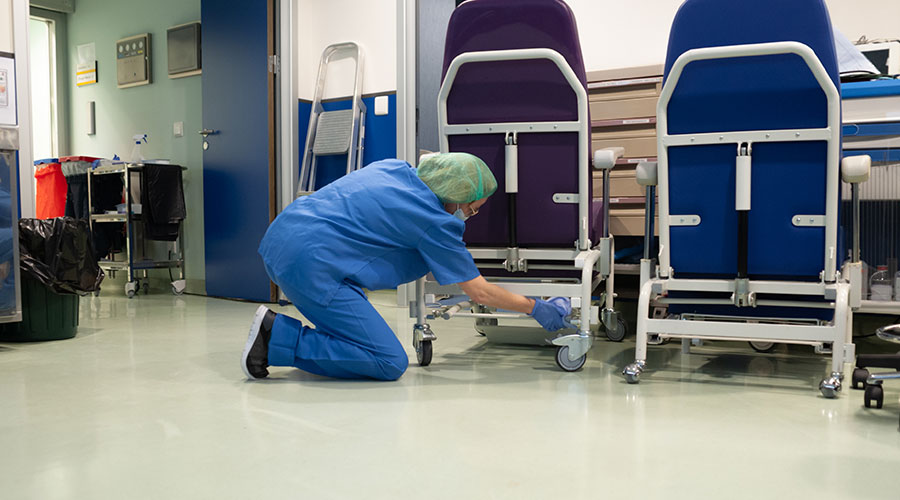Creating a fully effective infection prevention and control (IPC) program involves partnerships among key personnel in healthcare facilities departments and entities. These personnel have expertise and roles that can directly benefit the program if their work aligns with its goals. But they also can harm the program if their goals and priorities run counter to the program’s goals.
For example, an environmental services program that prioritizes rapid and efficient room turnover could directly reduce the effectiveness of the IPC program if rapid turnover does not allow for adequate time to clean the patient rooms thoroughly and reduce the risk of transmission of contagious pathogens. The support and resources for these partner personnel are budgeted separately from the formal IPC program.
To elevate the standards and effectiveness of infection prevention and control programs in U.S. healthcare facilities, four organizations — the Society for Healthcare Epidemiology of America, the Association for Professionals in Infection Control and Epidemiology, the Infectious Diseases Society of America and the Pediatric Infectious Diseases Society — recently released a joint position paper urging facilities to make changes to achieve this goal.
When clean is not good enough
So why is there still no binding standard defining the acceptable microbial load on surfaces — colony forming unit per square meter, or CFU/m2 — or in the air — CFU/m3 — in hospitals? Despite numerous studies linking high microbial loads to healthcare-associated infections (HAI) — including resistant strains, increased mortality and extended hospital stays — healthcare facilities still rely on non-binding recommendations.
Related Content: Biofilms: The New Frontier for Reducing MDRO
Finding evidence for cleaning is compromised by the fact that modeling HAI rates against arbitrary measurements of cleaning and cleanliness require universal standards, and these have not been established. The distinction between cleaning — soil removal — and cleanliness — soil remaining — also is usually overlooked.
For hand-touch surfaces in the near-patient environment, hard surfaces should be less than 5 CFU/m2. Critical care, bone marrow transplant and oncology units might require a more stringent standard. These CFUs are aerobic microbes, including fungi. They do not include viruses, parasites, etc.
Establishing standards for surface cleanliness undoubtedly would help focus attention on what cleaning is and what it does. As for cleaning processes, these should reflect the type of hospital, unit, patient vulnerability and infection risk. Working toward an evidence-based benchmark should encompass routine cleaning practices, cleaning products, sampling methods and laboratory processes.
In the absence of a universal standard and according to this joint position paper, it is entirely appropriate for each facility to decide on the level of cleanliness that is appropriate for its patients, with long-term monitoring to establish the range and trends of the bioburden.
This approach requires the facility to have evidence-based, near-patient, surface standards along with training and education for the environmental services staff. Recognizing the value of a clean hospital should benefit the professional cleaning staff, with elevated status and corresponding salary scales.
J. Darrel Hicks, BA, MESRE, CHESP, Certificate of Mastery in Infection Prevention, is the past president of the Healthcare Surfaces Institute. Hicks is nationally recognized as a subject matter expert in infection prevention and control as it relates to cleaning. He is the owner and principal of Safe, Clean and Disinfected. His enterprise specializes in B2B consulting, webinar presentations, seminars and facility consulting services related to cleaning and disinfection. He can be reached at darrel@darrelhicks.com, or learn more at www.darrelhicks.com.

 AI Usage for Healthcare Facilities
AI Usage for Healthcare Facilities Ground Broken on Pelican Valley Senior Living Modernization Project
Ground Broken on Pelican Valley Senior Living Modernization Project All-Electric UCI Health – Irvine Hospital Set to Open
All-Electric UCI Health – Irvine Hospital Set to Open The Rising Strategic Value of Owner's Reps in Healthcare
The Rising Strategic Value of Owner's Reps in Healthcare Lawrence Group Designs Pair of Ignite Medical Resorts in Missouri
Lawrence Group Designs Pair of Ignite Medical Resorts in Missouri